-
 Bitcoin
Bitcoin $106,731.2224
-1.05% -
 Ethereum
Ethereum $2,444.9804
-1.20% -
 Tether USDt
Tether USDt $1.0003
0.01% -
 XRP
XRP $2.1882
0.09% -
 BNB
BNB $651.1435
-0.61% -
 Solana
Solana $148.3252
-2.09% -
 USDC
USDC $1.0000
0.01% -
 TRON
TRON $0.2787
0.55% -
 Dogecoin
Dogecoin $0.1598
-3.16% -
 Cardano
Cardano $0.5520
-2.43% -
 Hyperliquid
Hyperliquid $39.0960
-2.64% -
 Bitcoin Cash
Bitcoin Cash $516.9519
2.98% -
 Sui
Sui $2.7011
-2.95% -
 Chainlink
Chainlink $13.0582
-1.71% -
 UNUS SED LEO
UNUS SED LEO $8.9250
-2.53% -
 Stellar
Stellar $0.2359
-0.18% -
 Avalanche
Avalanche $17.3856
-3.73% -
 Toncoin
Toncoin $2.8095
-3.56% -
 Shiba Inu
Shiba Inu $0.0...01121
-1.95% -
 Litecoin
Litecoin $85.2795
-0.85% -
 Hedera
Hedera $0.1471
-2.15% -
 Monero
Monero $319.8004
1.12% -
 Dai
Dai $1.0001
0.01% -
 Ethena USDe
Ethena USDe $1.0001
0.02% -
 Bitget Token
Bitget Token $4.5344
-1.07% -
 Polkadot
Polkadot $3.3224
-2.96% -
 Uniswap
Uniswap $6.9697
-2.75% -
 Aave
Aave $266.1658
-2.25% -
 Pepe
Pepe $0.0...09414
-3.41% -
 Pi
Pi $0.4913
-3.29%
What is the problem with Trezor Model T unable to send transactions?
The Trezor Model T may fail to send transactions due to connectivity issues, outdated firmware, incorrect settings, insufficient funds, or network congestion; follow detailed steps to resolve these problems.
Apr 06, 2025 at 05:08 am
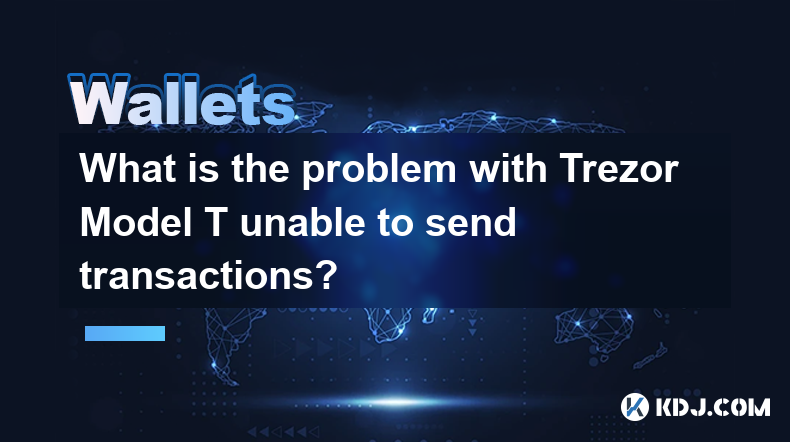
The Trezor Model T is a popular hardware wallet used by many in the cryptocurrency community to securely store their digital assets. However, users occasionally encounter issues when trying to send transactions from their Trezor Model T. This article will delve into the common problems associated with the Trezor Model T's inability to send transactions, explore the reasons behind these issues, and provide detailed solutions to help users resolve them.
Common Issues with Trezor Model T Transaction Sending
When users face difficulties sending transactions from their Trezor Model T, several common issues often come to the forefront. The most frequent problems include connectivity issues, outdated firmware, incorrect settings, and insufficient funds. Understanding these issues is crucial for diagnosing and resolving the problem effectively.
Connectivity Issues
One of the primary reasons a Trezor Model T might fail to send transactions is due to connectivity problems. The device needs to be properly connected to your computer or mobile device to function correctly. If the connection is unstable or interrupted, the transaction process can be halted.
To troubleshoot connectivity issues, follow these steps:
- Ensure the Trezor Model T is properly plugged into your computer or connected via USB.
- Check if the USB cable is functioning correctly by trying a different cable.
- Restart your computer and the Trezor Model T to refresh the connection.
- If using a USB hub, connect the Trezor directly to your computer to rule out hub-related issues.
Outdated Firmware
Another common issue that can prevent the Trezor Model T from sending transactions is outdated firmware. The firmware of the device needs to be up-to-date to ensure compatibility with the latest software and security protocols.
To update the firmware on your Trezor Model T, follow these steps:
- Connect your Trezor Model T to your computer and open the Trezor Suite.
- Navigate to the 'Settings' menu and select 'Device' from the dropdown.
- Click on 'Firmware Update' and follow the on-screen instructions to download and install the latest firmware.
- After the update is complete, restart your Trezor Model T and try sending the transaction again.
Incorrect Settings
Incorrect settings on the Trezor Model T or the associated software can also lead to transaction failures. Ensuring that the settings are correctly configured is essential for smooth transaction processing.
To check and adjust your settings, follow these steps:
- Open the Trezor Suite and go to the 'Settings' menu.
- Review the 'General' settings to ensure that the correct cryptocurrency network is selected.
- Check the 'Advanced' settings to confirm that the transaction fees are set appropriately.
- If you are using a third-party wallet application, ensure that it is compatible with the Trezor Model T and that the settings are correctly configured.
Insufficient Funds
A straightforward yet often overlooked reason for transaction failures is insufficient funds in the wallet. If the wallet does not have enough cryptocurrency to cover the transaction amount and the associated fees, the transaction will not be processed.
To check your wallet balance and ensure sufficient funds, follow these steps:
- Connect your Trezor Model T to your computer and open the Trezor Suite.
- Navigate to the 'Accounts' section to view your current balance.
- If the balance is insufficient, add more funds to your wallet before attempting to send the transaction.
Transaction Fee Issues
Another potential issue that can prevent the Trezor Model T from sending transactions is related to transaction fees. If the fees are set too low, the transaction may not be processed by the network, leading to delays or failures.
To adjust the transaction fees on your Trezor Model T, follow these steps:
- Open the Trezor Suite and go to the 'Send' section.
- Enter the recipient's address and the amount you wish to send.
- Click on 'Advanced Options' to adjust the transaction fee.
- Set the fee to an appropriate level based on the current network congestion and retry the transaction.
Network Congestion
Network congestion can also impact the ability to send transactions from the Trezor Model T. During periods of high network activity, transactions may take longer to process or may fail altogether.
To mitigate the effects of network congestion, consider the following strategies:
- Monitor the current network status using blockchain explorers or other tools.
- Adjust the transaction fee to a higher level to prioritize your transaction during congested periods.
- Attempt to send the transaction during off-peak hours when the network is less busy.
Conclusion
In conclusion, the inability to send transactions from a Trezor Model T can be attributed to various factors, including connectivity issues, outdated firmware, incorrect settings, insufficient funds, transaction fee problems, and network congestion. By understanding these issues and following the detailed steps provided, users can effectively troubleshoot and resolve these problems, ensuring smooth and secure transaction processing.
Frequently Asked Questions
Q: Can I use the Trezor Model T with multiple computers?
A: Yes, the Trezor Model T can be used with multiple computers. However, you should ensure that each computer is secure and that you trust the environment. Always use the same recovery seed and PIN across all devices to maintain access to your funds.
Q: What should I do if my Trezor Model T is lost or stolen?
A: If your Trezor Model T is lost or stolen, you should immediately transfer your funds to a new wallet using your recovery seed. Do not enter your recovery seed on any device that you do not trust, as this could compromise your funds.
Q: How often should I update the firmware on my Trezor Model T?
A: It is recommended to update the firmware on your Trezor Model T whenever a new version is available. Regular updates ensure that your device remains secure and compatible with the latest software and protocols.
Q: Can I recover my funds if I forget my PIN?
A: Yes, you can recover your funds if you forget your PIN by using your recovery seed to set up your Trezor Model T on a new device. However, you will need to wipe the device and set a new PIN, which will erase all data on the device.
Disclaimer:info@kdj.com
The information provided is not trading advice. kdj.com does not assume any responsibility for any investments made based on the information provided in this article. Cryptocurrencies are highly volatile and it is highly recommended that you invest with caution after thorough research!
If you believe that the content used on this website infringes your copyright, please contact us immediately (info@kdj.com) and we will delete it promptly.
- UniCredit, Bitcoin, and BlackRock ETF: A New Era of Crypto Investment?
- 2025-07-02 00:30:12
- UniCredit, Bitcoin ETF, and BlackRock: A New York Minute on Crypto's Big Players
- 2025-07-02 00:30:12
- Boba Network: $70M Funding & FTX Recovery – What's the Deal?
- 2025-07-01 22:50:11
- Sentiment Data's Hidden Gems: Top Performing Cryptos You're Missing
- 2025-07-01 23:10:15
- Deutsche Bank's Bitcoin Custody Play: A New York Minute on Crypto Services
- 2025-07-01 22:30:12
- Avalanche, Partnership, and Bitcoin: A New York Minute on Crypto Convergence
- 2025-07-01 23:10:15
Related knowledge
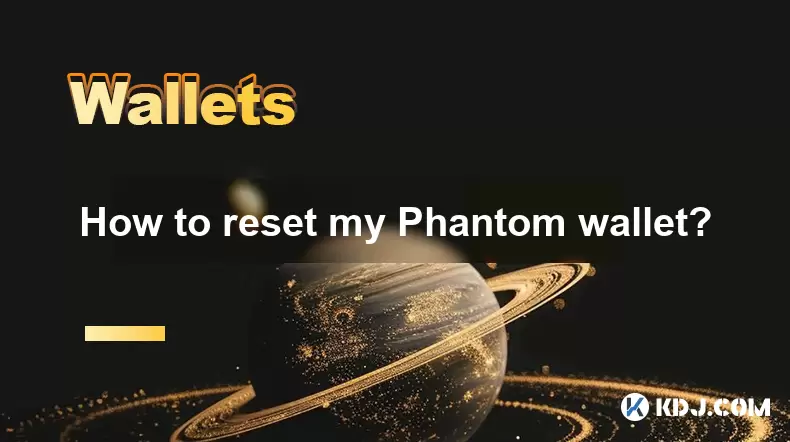
How to reset my Phantom wallet?
Jul 02,2025 at 12:36am
Understanding the Need for Resetting Your Phantom WalletIf you're using a Phantom wallet, you may encounter situations where resetting your wallet becomes necessary. This could be due to forgotten passwords, seed phrase issues, or account corruption. Phantom is a non-custodial wallet primarily used for interacting with the Solana blockchain, and it stor...
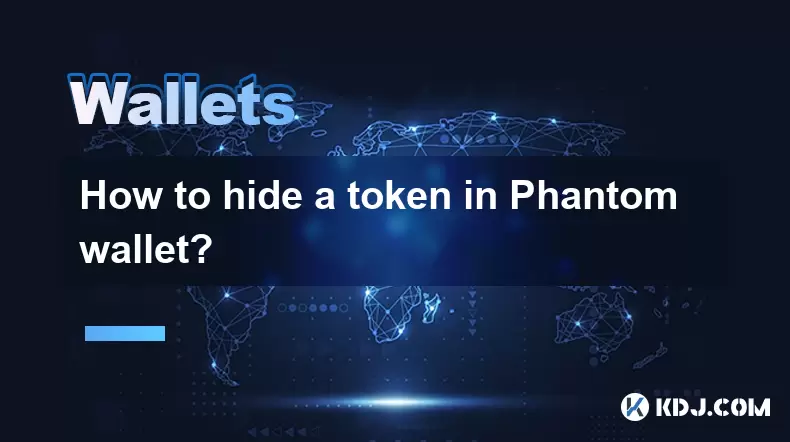
How to hide a token in Phantom wallet?
Jul 01,2025 at 05:49pm
Understanding the Phantom Wallet InterfacePhantom wallet is a popular non-custodial wallet used primarily for interacting with the Solana blockchain. It allows users to store, send, receive, and manage various tokens, including both fungible and non-fungible tokens (NFTs). Before attempting to hide a token, it's essential to understand how the wallet in...
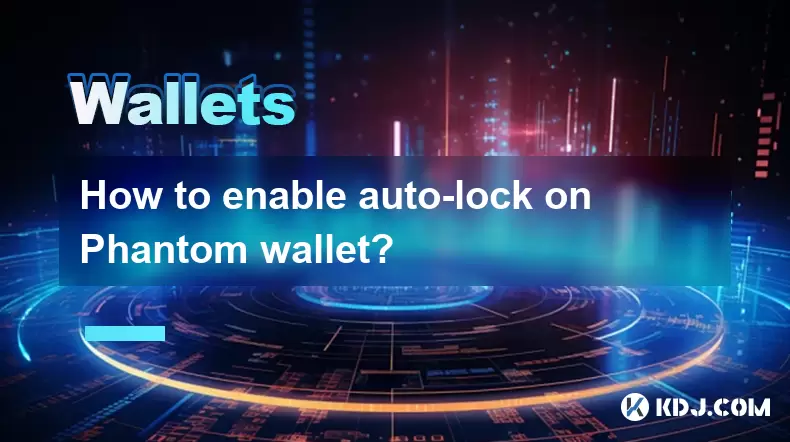
How to enable auto-lock on Phantom wallet?
Jul 01,2025 at 04:01pm
What is Auto-Lock in Phantom Wallet?Phantom wallet is a popular non-custodial cryptocurrency wallet used primarily for interacting with the Solana blockchain. One of its security features includes the ability to set an auto-lock timer, which ensures that the wallet locks itself automatically after a period of inactivity. Auto-lock enhances security by p...
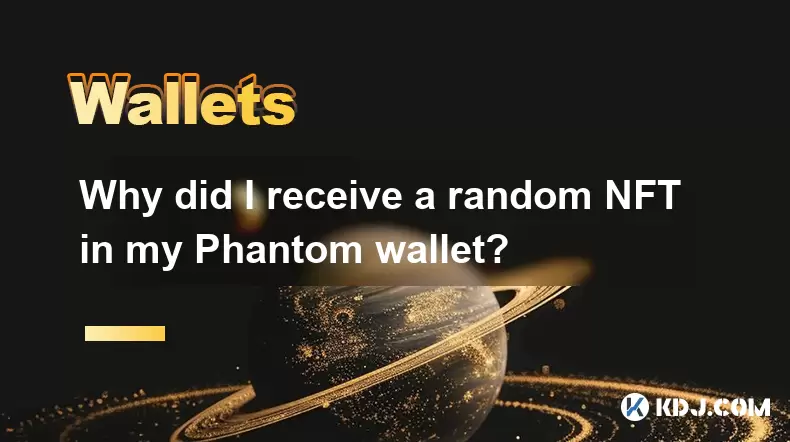
Why did I receive a random NFT in my Phantom wallet?
Jul 01,2025 at 09:00pm
Receiving an Unexpected NFT in Your Phantom WalletIf you've recently opened your Phantom wallet and noticed an unfamiliar NFT appearing in your collection, you're not alone. Many users have reported receiving random or unsolicited non-fungible tokens, often without any prior interaction with the project or sender. This phenomenon has become increasingly...
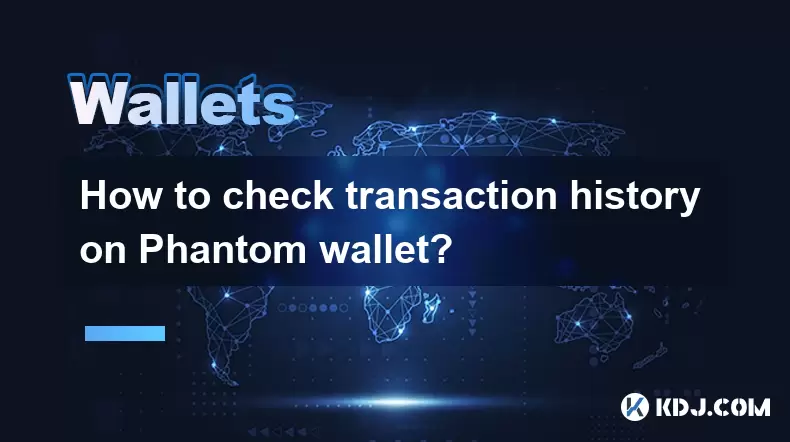
How to check transaction history on Phantom wallet?
Jul 01,2025 at 07:49pm
What Is Phantom Wallet?Phantom wallet is a popular non-custodial cryptocurrency wallet primarily used for interacting with the Solana blockchain. It allows users to store, send, receive, and manage their Solana-based tokens and NFTs securely. One of the essential features of any crypto wallet is the ability to check transaction history. Understanding ho...
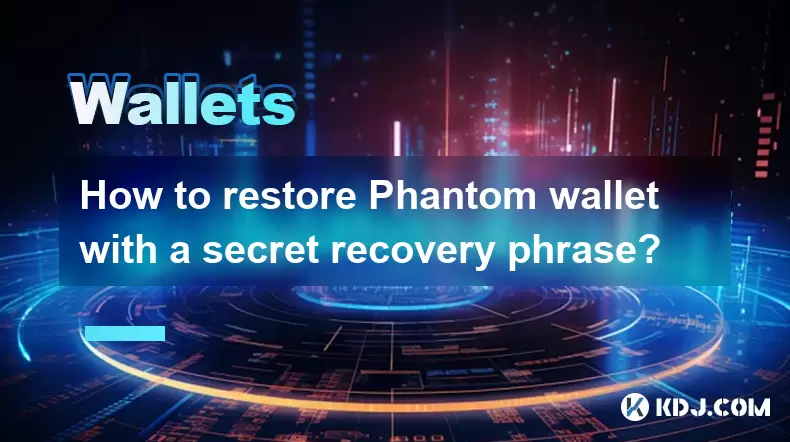
How to restore Phantom wallet with a secret recovery phrase?
Jul 01,2025 at 02:56pm
What is a Phantom wallet and why might you need to restore it?Phantom is a popular non-custodial cryptocurrency wallet primarily used for interacting with the Solana blockchain. It allows users to store, send, receive, and stake SOL tokens as well as manage NFTs and other SPL tokens. Since Phantom wallet is non-custodial, users are solely responsible fo...

How to reset my Phantom wallet?
Jul 02,2025 at 12:36am
Understanding the Need for Resetting Your Phantom WalletIf you're using a Phantom wallet, you may encounter situations where resetting your wallet becomes necessary. This could be due to forgotten passwords, seed phrase issues, or account corruption. Phantom is a non-custodial wallet primarily used for interacting with the Solana blockchain, and it stor...

How to hide a token in Phantom wallet?
Jul 01,2025 at 05:49pm
Understanding the Phantom Wallet InterfacePhantom wallet is a popular non-custodial wallet used primarily for interacting with the Solana blockchain. It allows users to store, send, receive, and manage various tokens, including both fungible and non-fungible tokens (NFTs). Before attempting to hide a token, it's essential to understand how the wallet in...

How to enable auto-lock on Phantom wallet?
Jul 01,2025 at 04:01pm
What is Auto-Lock in Phantom Wallet?Phantom wallet is a popular non-custodial cryptocurrency wallet used primarily for interacting with the Solana blockchain. One of its security features includes the ability to set an auto-lock timer, which ensures that the wallet locks itself automatically after a period of inactivity. Auto-lock enhances security by p...

Why did I receive a random NFT in my Phantom wallet?
Jul 01,2025 at 09:00pm
Receiving an Unexpected NFT in Your Phantom WalletIf you've recently opened your Phantom wallet and noticed an unfamiliar NFT appearing in your collection, you're not alone. Many users have reported receiving random or unsolicited non-fungible tokens, often without any prior interaction with the project or sender. This phenomenon has become increasingly...

How to check transaction history on Phantom wallet?
Jul 01,2025 at 07:49pm
What Is Phantom Wallet?Phantom wallet is a popular non-custodial cryptocurrency wallet primarily used for interacting with the Solana blockchain. It allows users to store, send, receive, and manage their Solana-based tokens and NFTs securely. One of the essential features of any crypto wallet is the ability to check transaction history. Understanding ho...

How to restore Phantom wallet with a secret recovery phrase?
Jul 01,2025 at 02:56pm
What is a Phantom wallet and why might you need to restore it?Phantom is a popular non-custodial cryptocurrency wallet primarily used for interacting with the Solana blockchain. It allows users to store, send, receive, and stake SOL tokens as well as manage NFTs and other SPL tokens. Since Phantom wallet is non-custodial, users are solely responsible fo...
See all articles

























































































